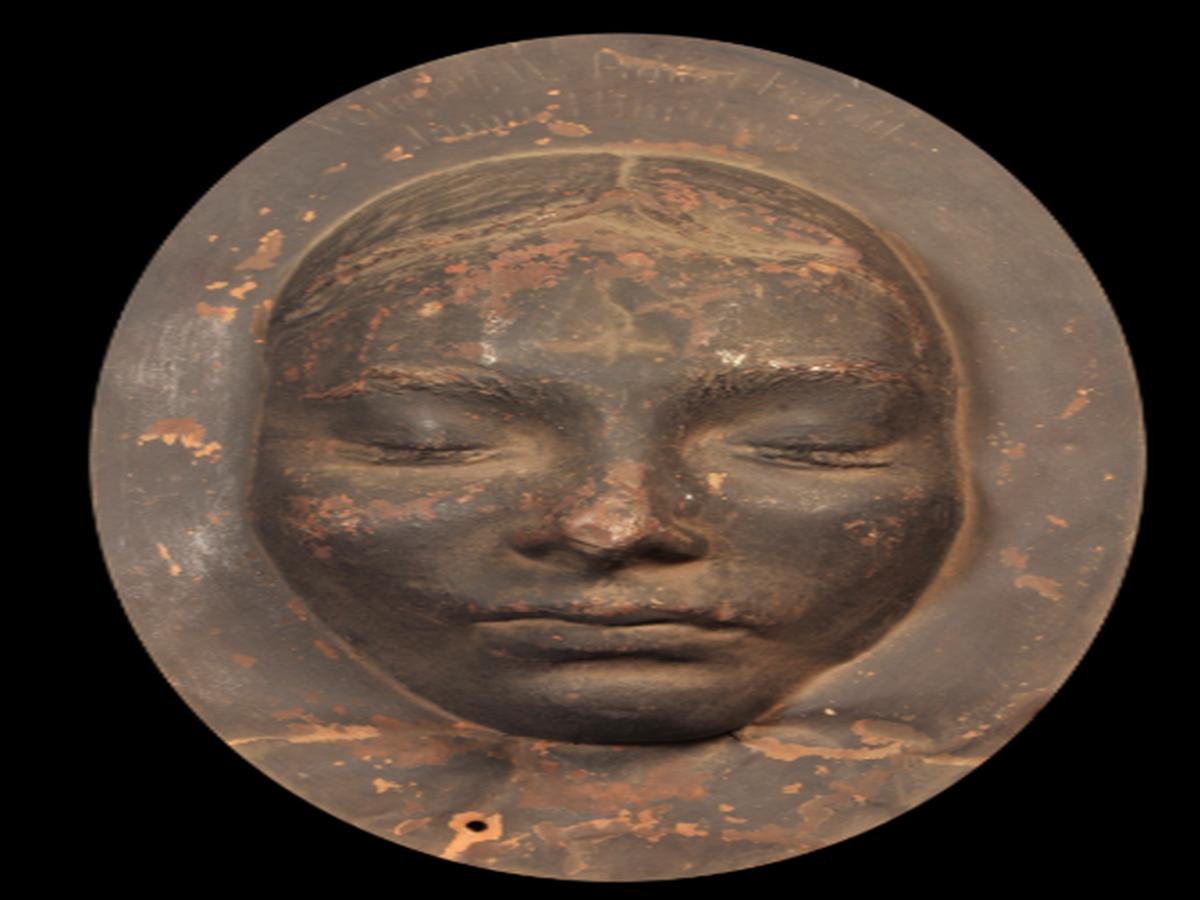State
Tribe Name
Art Type
short description
Carved face moulds are among the important artefact types in Western Himalayan societies. Oval in shape and entirely metal cast, this particular mould depicts the serene and dignified features of Vombri. Engraved on the top of the mould are her name and Jammu, making this mould of a personalised identity and therefore a geographic anchor. The mould, belonging to the Pahari tribe, is representative of a culture long steeped in the tradition of recording memory through visual and material expressions.
Thumbnail

Filter Postion
Left
Filter Background
Off
Theme
Filter Header Image

content
Image

description
Carved face moulds are among the important artefact types in Western Himalayan societies. Oval in shape and entirely metal cast, this particular mould depicts the serene and dignified features of Vombri. Engraved on the top of the mould are her name and Jammu, making this mould of a personalised identity and therefore a geographic anchor. The mould, belonging to the Pahari tribe, is representative of a culture long steeped in the tradition of recording memory through visual and material expressions.
The Pahari people are distinguished by their rich folklore, oral histories, and craftsmanship in metal and wood. Much of their culture is expressed in song, miniature painting, and architecture; but face moulds like this one immortalise selected aspects of individual lives. This type of mould seems to have been an object of domestic or communal use—in the case of either individual shrines or family shrines—to honour the dead and maintain spiritual connections with ancestors. The detailed rendering of Vombri's face in a material that would last throughout eternity bespeaks artistic dedication and deep familial respect. Thus, Vombri's memory lives on—not as just a name but as a permanent image that binds past generations to the present, echoing the cultural values and emotional depth of the Pahari people.
The Pahari people are distinguished by their rich folklore, oral histories, and craftsmanship in metal and wood. Much of their culture is expressed in song, miniature painting, and architecture; but face moulds like this one immortalise selected aspects of individual lives. This type of mould seems to have been an object of domestic or communal use—in the case of either individual shrines or family shrines—to honour the dead and maintain spiritual connections with ancestors. The detailed rendering of Vombri's face in a material that would last throughout eternity bespeaks artistic dedication and deep familial respect. Thus, Vombri's memory lives on—not as just a name but as a permanent image that binds past generations to the present, echoing the cultural values and emotional depth of the Pahari people.
Image Mode
portrait
promoted
On
Verified
Off
